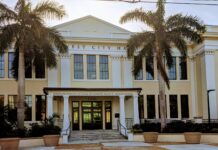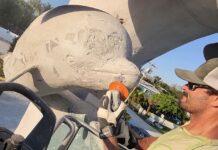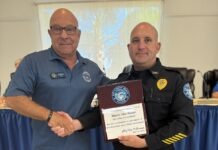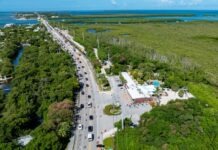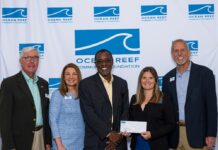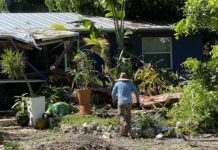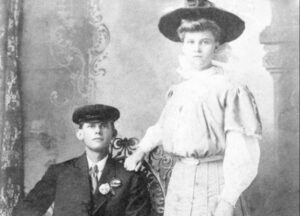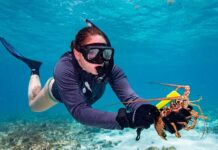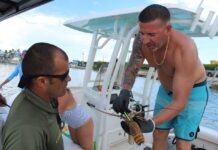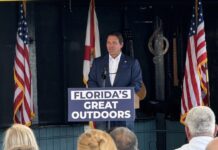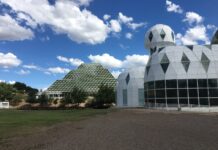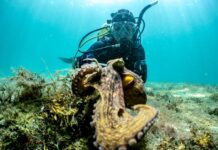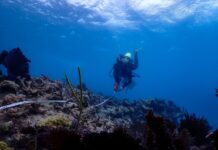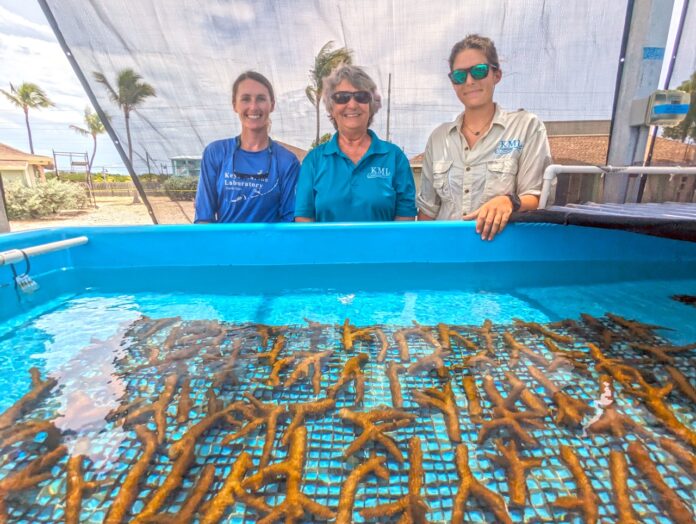
A heat wave in the Florida Keys brought a large-scale coral rescue effort among reef restoration organizations in 2023.
BLEACHING BEGINS
Spells of intense heat during the early summer months put corals off the Florida Keys in severe stress as restoration practitioners began to witness bleaching in mid-July.
Bleaching occurs when polyps under stress, like heat, expel algal cells that give them their color and provide energy for the coral in a symbiotic relationship. Keys Weekly’s Alex Rickert reported on the early beginnings of the bleaching, which is usually seen in limited quantities of coral species during the late summer months when temperatures reach 30.5 degrees Celsius, or 87 degrees Fahrenheit. 2023 was a different story, however, as local reef restoration practitioners noticed bleaching at Looe Key, Sombrero and eastern Dry Rocks reefs earlier.
Michael Crosby, Mote president and CEO, called the temperature stress and resulting bleaching “absolutely one of the single most challenging threats that there are to the continued survival of reefs around the world.”
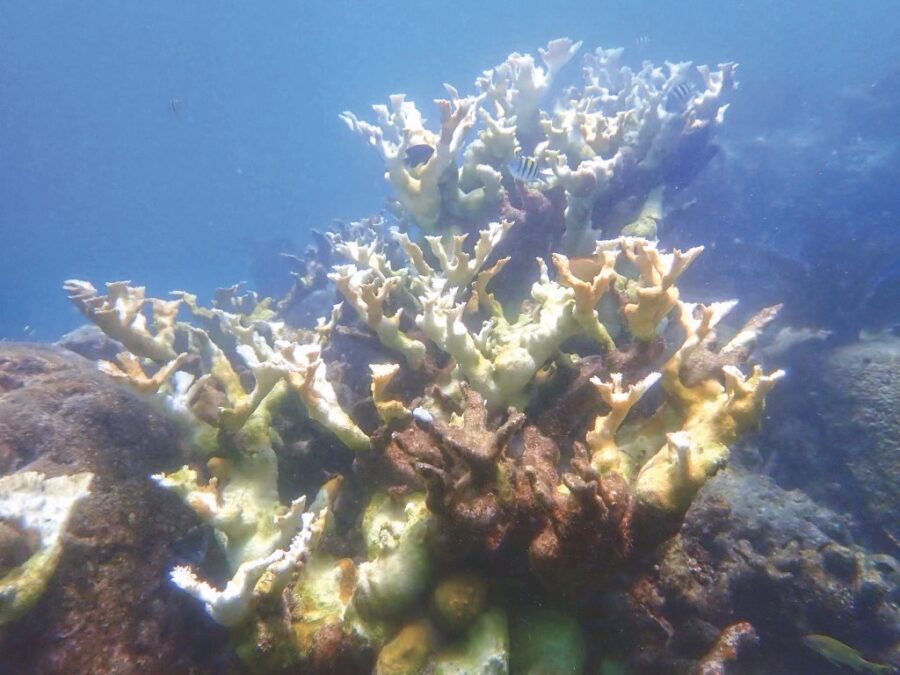
HEAT AFFECTS WILDLIFE
The arrival of sweltering summer heat in the Florida Keys in late June began suffocating critical marine resources like corals. But Keys Weekly freelancer Tiffany Duong’s July 27 report detailed some of the effects on wildlife from the heat wave which brought hot waters. Florida Fish & Wildlife Conservation Commission’s Tom Matthews and Bonefish & Tarpon Trust’s Ross Boucek told Keys Weekly most dead fish were tropical species. In the nearshore, juvenile reef species including snapper and grunts were among the dead fish.
CORAL RESCUE
The marine heat wave during June and July forced swift action from Keys restoration groups to save as many corals as possible. Many organizations decided to bring bleached and stressed corals from offshore nurseries to land-based facilities to save them from the extreme temperatures.
One of the safe havens is Florida Institute of Oceanography’s Keys Marine Laboratory (KML) in Layton. Hosted by University of South Florida, the scientific research field station supports researchers from various organizations and universities by providing marine biology expertise, saltwater raceways, boats and scientific divers. During this crisis, they were the triage station for thousands of corals coming in hot and hurting from offshore nurseries.
KML recently added new, state-of-the-art systems and raceways to its facilities. The field station now boasts 60 seawater tables, ranging from 40 to 4,000 gallons.
NOAA PROTECTS CORAL NURSERY
NOAA used its emergency authority in September to create a temporary special use area in Florida Keys National Marine Sanctuary. The move protected endangered corals relocated to a nursery in federal waters roughly 5 miles southeast of Tavernier. The relocated site, protecting 2,800 coral fragments, has been established in 70 feet of water. NOAA said in November that the special use protections would remain in place for another 60 days.
“It’s critical for managers to have the ability to quickly respond to urgent situations,” said Sarah Fangman, sanctuary superintendent.
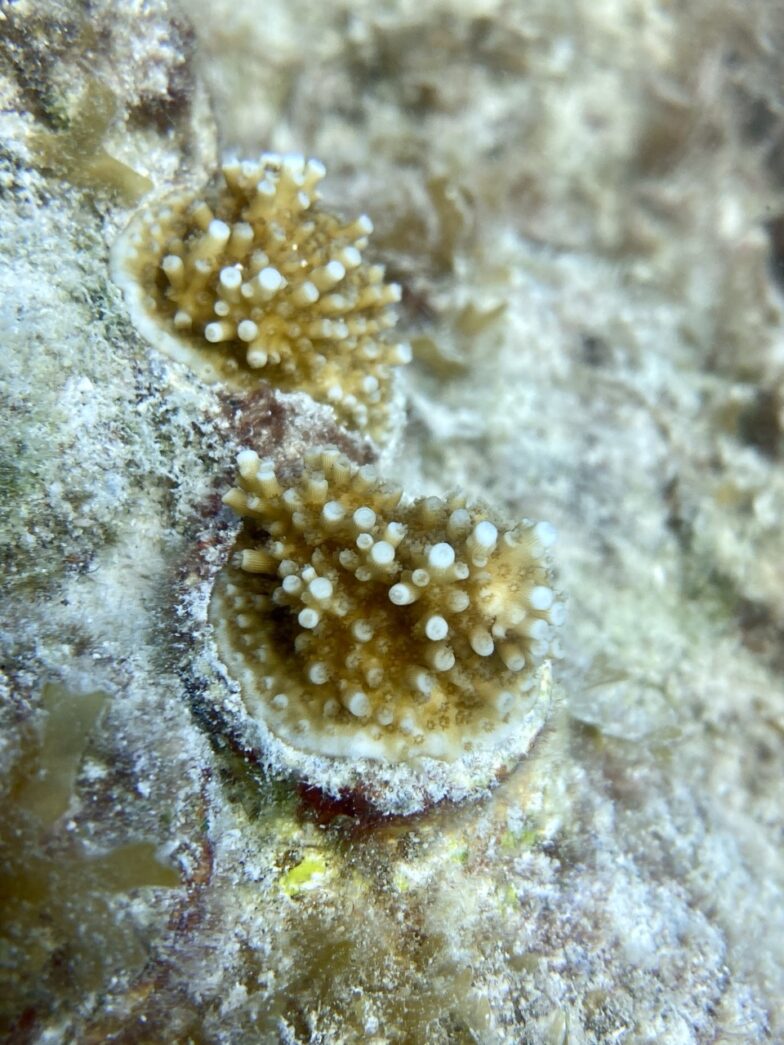
RESCUED CORALS RETURN HOME
Duong reported on Nov. 16 that reef restoration organizations were returning rescued corals back to the ocean. Except for a “small handful” of corals that didn’t pass inspection, Reef Renewal USA moved all its KML corals back to their Looe Key nursery, said founder Ken Nedimyer.
“We’re glad we were able to preserve the genetic diversity we have spent so much time collecting and propagating,” Nedimyer said.
